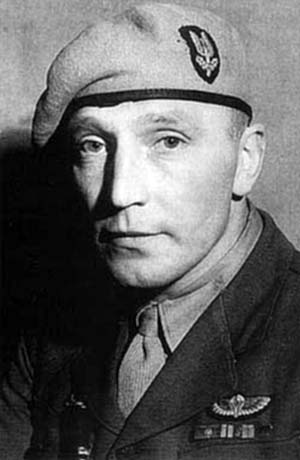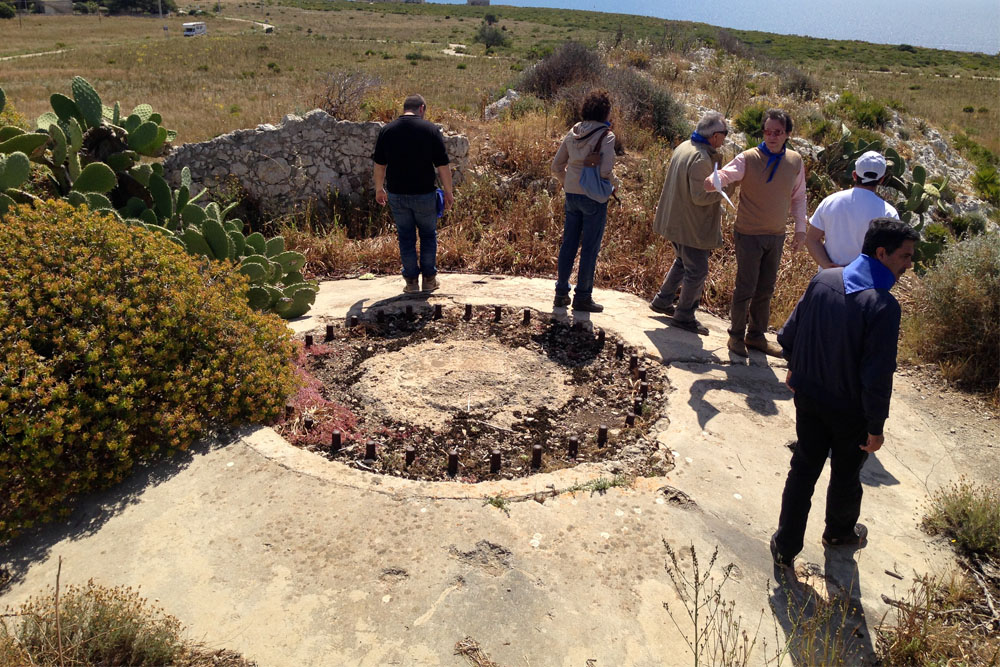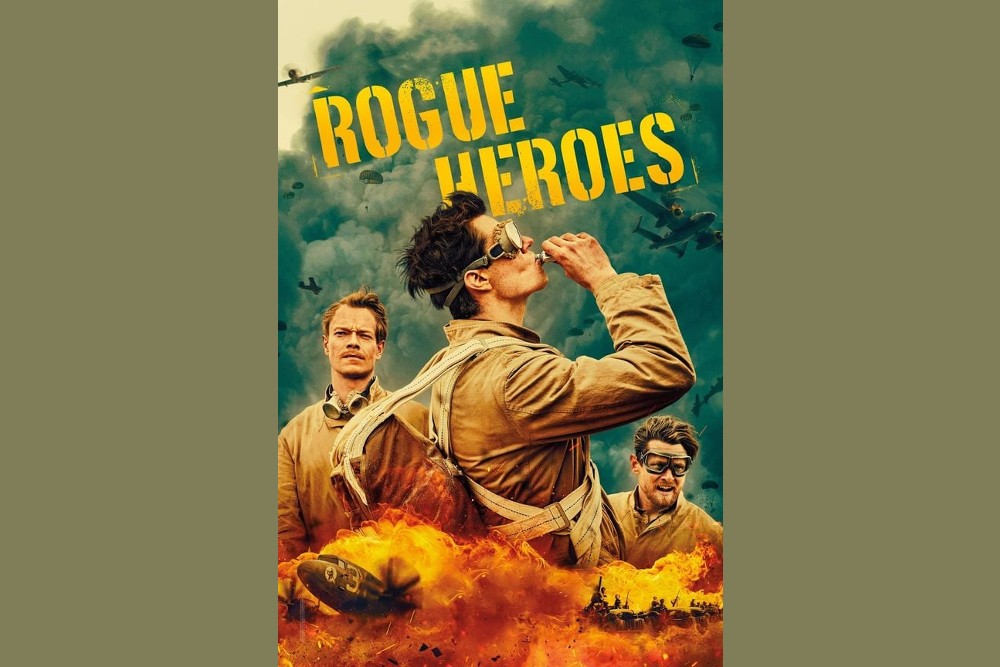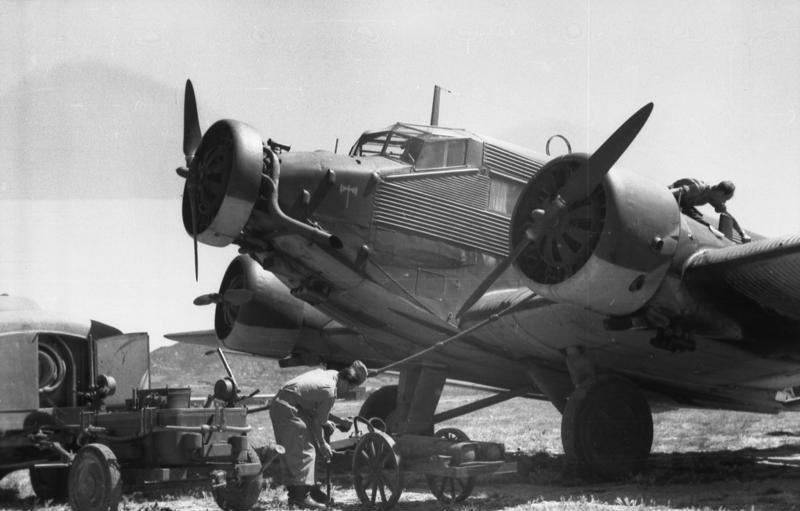Mayne, Robert Blair "Paddy"
- Date of birth:
- January 11th, 1915 (Newtownards/Northern-Ireland, Great Britain)
- Date of death:
- December 14th, 1955 (Newtownards/Northern-Ireland, Great Britain)
- Service number:
- 87306
- Nationality:
- British
Biography
Mayne was educated at Regent House Grammar School and Queen's University Belfast, where he studied law and excelled in sports.
Mayne joined the Royal Ulster Rifles in early 1939, received a commission in the Royal Artillery, and served with various anti-aircraft units before returning to the Rifles in 1940.
In 1941, he volunteered for No. 11 (Scottish) Commando and fought in the Syria–Lebanon campaign, earning a mention in despatches. His aggressive personality famously led to his dismissal after assaulting a fellow officer.
Recruited into the fledgling SAS by David Stirling, Mayne became a key figure in desert raids during 1941–42, pioneering jeep-based attacks and credited with destroying over 100 enemy aircraft. He received the DSO for the successful Wadi Tamet raid and a bar for his leadership in Sicily.
Following Stirling’s capture in 1943, Mayne took command of the Special Raiding Squadron, leading operations in Sicily and Italy through the end of that year.
Promoted to lieutenant colonel in January 1944, Mayne led the 1st SAS Regiment across campaigns in France, the Low Countries, Germany, and Norway, often coordinating with resistance fighters. His leadership and daring earned him a second bar to the DSO—making him one of the British Army’s most decorated officers.
In 1945, he served as Deputy Expedition Leader for the Falkland Islands Dependencies Survey
.
Post-war, Mayne returned to Newtownards, worked as a solicitor, and later became Secretary of the Law Society of Northern Ireland. Chronic back pain left him sidelined from rugby, and he rarely discussed his military career.
On 13 December 1955, he died in a car accident at age 38.
Promotions:
February 27th, 1939: commissioned as 2nd Lieutenant;
December 2nd, 1942: Captain (war sub);
December 21st, 1942: Major (temporary);
April 7th, 1944: Major (war sub);
April 1946: Lieutenant-Colonel (temporary).
Career:
?: Ards Academy;
?: Regent House;
?: The Queens University, Belfast;
?: Officers Training Corps, Queens University;
?: 5th Light Anti-Aircraft Battery SR (Supplementary Reserve), Newtownards;
?: The Royal Ulster Rifles;
?: The Cameronians;
?: 11th (Scottish) Commando;
?: Special Air Service;
?: Commanding Officer, 1st SAS (Special Raiding Squadron);
?: Commanding Officer 1st SAS Regiment;
?; Falkland Islands Dependency Survey;
?: Secretary, The Law Society of Ireland.
Do you have more information about this person? Inform us!
- Period:
- Second World War (1939-1945)
- Rank:
- Lieutenant
- Unit:
- Special Air Service (SAS), Combined Operations Headquarters, War Office, British Government
- Awarded on:
- February 24th, 1942
- Period:
- Second World War (1939-1945)
- Rank:
- Lieutenant
- Unit:
- Special Air Service (SAS), Combined Operations Headquarters, War Office, British Government
- Awarded on:
- February 24th, 1942
"At Sirte on 12/13 December this officer was instrumental in leading and succeeded in destroying with a small party of men, many aeroplanes, a bomb dump and a petrol dump. He led this raid in person and himself destroyed and killed many of the enemy. The task set was of the most hazardous nature, and it was due to this officer's courage and leadership that success was achieved. I cannot speak too highly of this officer's skill and devotion to duty."
- Period:
- Second World War (1939-1945)
- Rank:
- Temporary Major
- Unit:
- Special Raiding Squadron, 2nd SAS Regiment, Eighth Army, British Army
- Awarded on:
- October 21st, 1943
- Awarded for:
- Operation Husky
"Operation "Husky", Sicily, On July 10th 1943 & 12th July 1943, Major R.B.Mayne carried out two successful operations. The first, capture and destruction of coastal defence battery on Capo Murro Di Porco, the outcome of which was vital to the safe landing of XIII Corps. By nightfall 10/7/43, Special Raiding Squadron had captured three additional Btys, 450 prisoners as well as killing 200 to 300 Italians The second, the capture and holding of the town of Augusta. The landing was carried out in daylight, a most hazardous combined operation. By the audacity displayed the Italians were forced from their positions in masses and most valuable stores and equipment was saved from certain destruction. In both these operations it was Major Mayne's courage, determination and surperb leadership which proved the key to success. He personally led his men from the landing craft in the face of heavy machine gun fire and in the case of the Augusta raid, mortar fire. By these actions he succeeded in forcing his way to ground where it was possible to form up and sum up the enemy's defences."
Second DSO awarded as a bar for on the ribbon of the first DSO.
- Period:
- Second World War (1939-1945)
- Rank:
- Major
- Unit:
- 1st SAS Regiment, 21st Army Group, British Army
- Awarded on:
- March 29th, 1945
"Lt.Col. R.B.Mayne DSO has commanded 1st SAS Regt throughout the period of operations in France. On 7th August 44 he was dropped to the "HOUNDSWORTH" base located west of Dijon in order to co-ordinate and take charge of all available detachments of his Regiment and co-ordinate their action with a major airborne landing which was then envisaged near Paris. He then proceeded in a jeep in daylight to motor to the "GAIN" base near Paris making the complete journey in one day. On the approach of Allied forces he passed through the lines in his jeep to contact the American forces and lead back through the lines his detachment of 20 jeeps landed for operation "WALLACE". During the next few weeks he successfully penetrated the German and American lines in a jeep on four occasions in order to to lead parties of reinforcements.
It was entirely due to Lt.Col. Mayne's fine leadership and example, and due to his utter disregard of danger that the unit was able to achieve such striking success."
Third DSO awarded as secon bar for on the ribbon of the first DSO.
- Period:
- Second World War (1939-1945)
- Rank:
- Temporary Lieutenant-Colonel
- Unit:
- 1st SAS Regiment, 21st Army Group, British Army
- Awarded on:
- October 11th, 1945
"On Monday April 9th 1945, Lt.Col. R.B.Mayne was ordered by the GOC 4th Canadian Armoured Division to lead his Regiment (then consisting of two armoured jeep squadrons) through the British lines and infiltrate through the German lines. His general axis of advance was N/East towards the city of Oldenburg, with the special task of clearing a path for the Canadian armoured cars and tanks, and also causing alarm and disorganisation behind the enemy lines. As subsequent events proved the task of Lt.Col. Mayne's force was entirely and completely successful. This success however was solely due to the brilliant military leadership and cool calculating courage of Lt.Col.Mayne who, by a single act of supreme bravery drove the enemy from a strongly held key village thereby breaking the crust of the enemy defences in the whole of this sector.
The following is a detailed account of the Lt.Col's individual action which called for both unsurpassed heroism and cool clear sighted military knowledge.
Lt.Col.Mayne on receiving a wireless message from the leading squadron reporting that it was heavily engaged by enemy fire and that the squadron commander had been killed immediately drove forward to the scene of the action. From the time of his arrival until the end of the action Lt.Col. Mayne was in full view of the enemy and exposed to fire from small arms, machine guns, sniper rifles and Panzerfausts. On arrival he summed up the situation in a matter of seconds and entered the nearest house alone and ensured the enemy here had either withdrawn or been killed. He then siezed a Bren gun and magazines and single handly fired burst after burst into a second house, killing or wounding the enemy there and also opened fire on the woods. He then ordered a jeep to come forward and take over his fire position before returning to the forward position where he disposed the men to the best advantage and ordered another jeep to come forward. He got into the jeep and with another officer as rear gunner drove forward past the position where the Squadron Commander had been killed a few minutes previously and continued to point a hundred yards ahead where a further section of jeeps were halted by intense and accurate enemy fire. This section had suffered casualties and wounded owing to the heavy enemy fire and the survivors were unable at that time to influence the action in any way until the arrival of Lt.Col.Mayne. The Lt.Col. continued along the road all the time engaging the enemy with fire from his own jeep. Having swept the whole area with close range fire he turned his jeep around and drove down the road again, still in full view of the enemy. By this time the enemy had suffered heavy casualties and had started to withdraw. Never the less they maintained intense fire on the road and it appearded almost impossible to extricate the wounded who were in a ditch near to the forward jeeps. Any attempt of rescuing these men under those conditions appeared virtually suicidal owing to the highly concentrated and accurate fire of the enemy. Though he fully realised the risk he was taking Lt.Col.Mayne turned his jeep round once more and returned to try and rescue these wounded. Then by superlative determination and displaying gallantry of the very highest degree and in the face of intense enemy machine gun fire he lifted the wounded one by one into the jeep, turned round and drove back to the main body. The entire enemy positions had been wiped out, the majority of the enemy having been killed or wounded leaving a very small percentage who were now in full retreat. The Squadron having suffered no further casualties were able to continue their advance and drive deeper behind the enemy to complete their task of sabotage and destruction of the enemy. Finally they reached a point 20 miles ahead of the advance guard of the advancing Canadian Division thus threatening the rear of the Germans who finally withdrew. From the time of the arrival of Lt.Col.Mayne his gallantry inspired all ranks. Not only did he save the lives of the wounded but he also completly defeated and destroyed the enemy."
In fact, Mayne was recommended for a VC for this actions. However, although the VC recommendation was signed by Field Marshal Bernard Montgomery, commander of the Allied 21st Army Group, Mayne instead received a fourth DSO. Even King George VI was to express surprise at the omission. Mayne replied: “I served to my best my Lord, my King and Queen and no one can take that honour away from me.”
An Early Day Motion put before the House of Commons in June 2005 and supported by more than 100 MPs also stated that:
“This House recognises the grave injustice meted out to Lt Col Paddy Mayne, of 1st SAS, who won the Victoria Cross at Oldenburg in North West Germany on 9th April 1945;
notes that this was subsequently downgraded, some six months later, to a third bar DSO, that the citation had been clearly altered and that David Stirling, founder of the SAS has confirmed that there was considerable prejudice towards Mayne and that King George VI enquired why the Victoria Cross had `so strangely eluded him';
further notes that on 14th December it will be 50 years since Col Mayne's untimely death, in a car accident, and this will be followed on 29th January 2006 by the 150th anniversary of the signing of the Royal Warrant to institute the Victoria Cross; and therefore calls upon the Government to mark these anniversaries by instructing the appropriate authorities to act without delay to reinstate the Victoria Cross given for exceptional personal courage and leadership of the highest order and to acknowledge that Mayne's actions on that day saved the lives of many men and greatly helped the allied advance on Berlin."
The motion was denied bij the British Government.
- Period:
- Second World War (1939-1945)
- Period:
- Second World War (1939-1945)
- Period:
- Second World War (1939-1945)
- Period:
- Second World War (1939-1945)
- Period:
- Second World War (1939-1945)
- Period:
- Second World War (1939-1945)
- Awarded on:
- 1946
First foreigner to be awarded the Legion d'Honneur
- Period:
- Second World War (1939-1945)
- Awarded on:
- 1946
- Period:
- Second World War (1939-1945)
Sources
- Photo 1: Government/ army photo
- - Second Supplement to The London Gazette Issue 35465 published on the 20 February 1942
- Supplement to The London Gazette Issue 36217 published on the 19 October 1943
- Supplement to The London Gazette Issue 37302 published on the 9 October 1945
- The National Archives
- The Blair Mayne Association
- Blair Mayne Research Society
- Council for British Archaeology
- The Telegraph
















